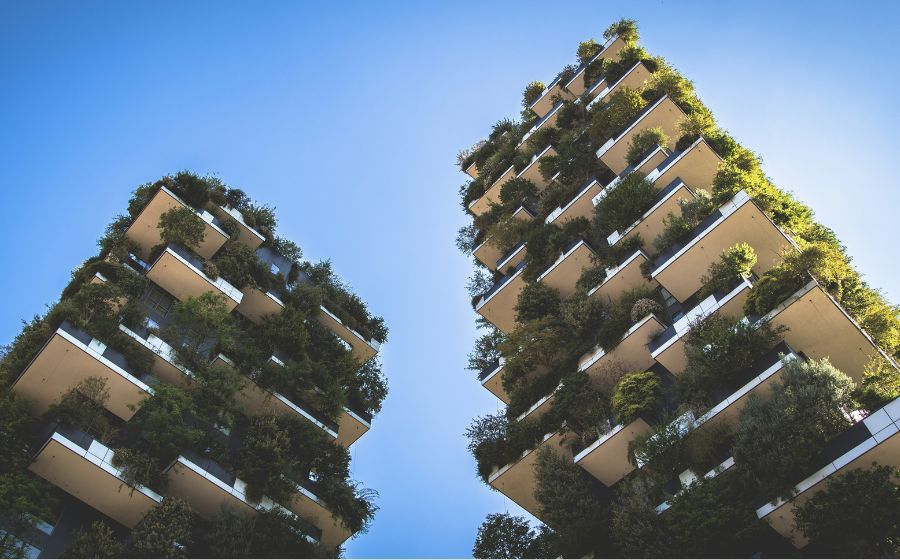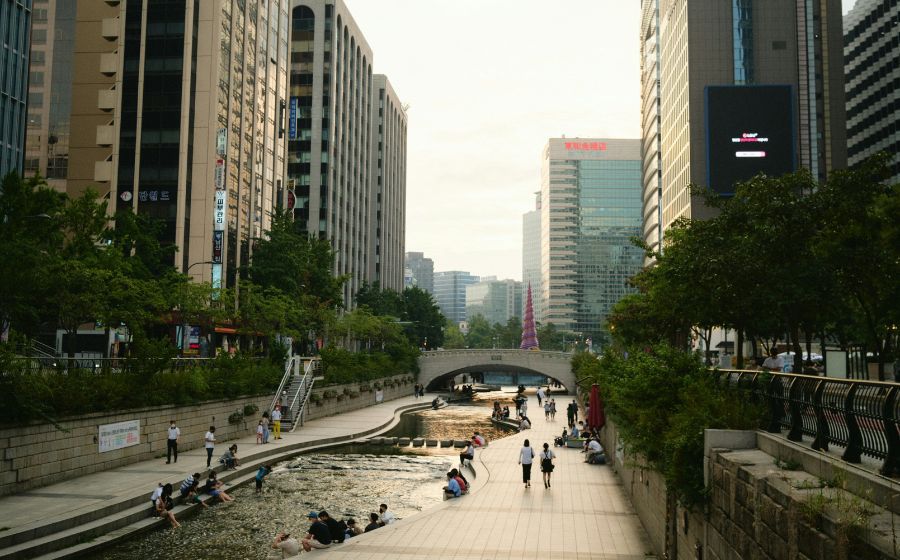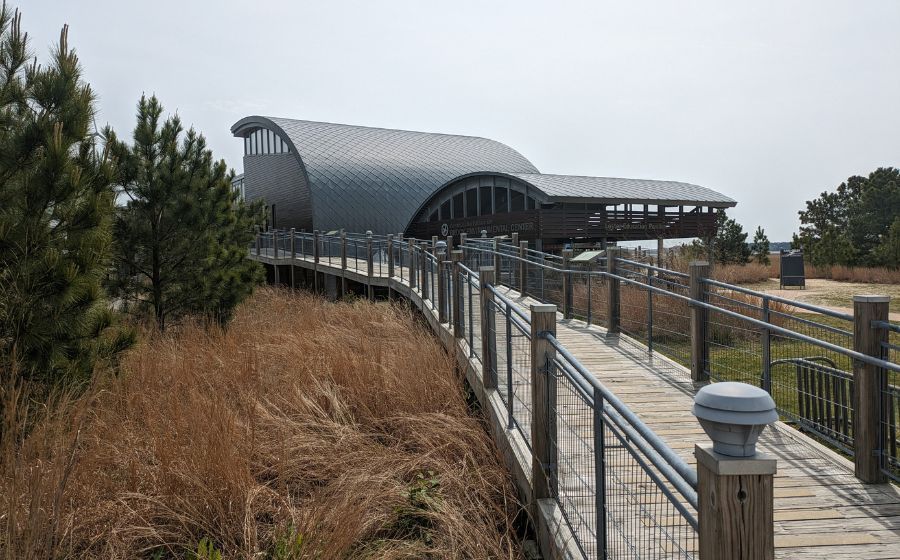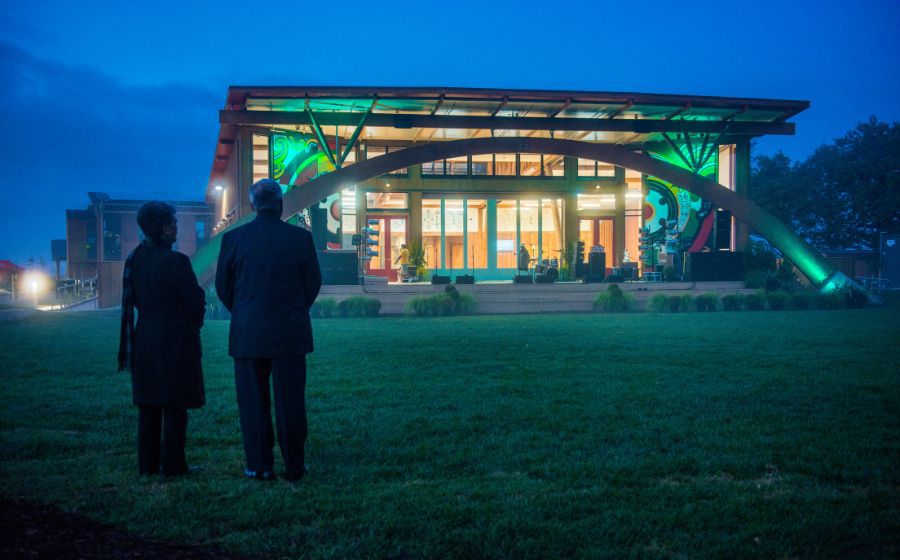Editor’s Note: This piece originally appeared on Metropolis magazine’s website with the headline “Interface Launches Guide for Exploring Life-Centered Design” as part of a content partnership.
Explore a holistic design approach that asks us to consider what built spaces would look like if we equally prioritized environmental impact, human health and wellbeing, beauty and function, and our connection to nature.

Interface has long committed to crafting spaces that benefit both people and the planet. “The idea that humans can design amazing things and thrive while the rest of life on Earth declines is a dangerous fiction that has seeped into our culture,” says Mikhail Davis, director of global market sustainability at Interface and certified biomimicry specialist. “The Interface journey in sustainability began when we realized we could no longer go on doing business as if we were alone on the planet; we learned that our fate is inextricably linked with the fate of all life on Earth. In the words of Interface founder Ray Anderson, ‘Anything we do to the web of life, we do to ourselves.’”
While Interface once approached the subjects of people and the planet separately—with one lens focusing on how a space influences occupant wellness and another examining its impact on the Earth—the company now celebrates the intrinsic interconnectedness of all life, as they embrace an emerging design ethos, Life-Centred Design. “Life-Centred Design puts a name to what we began searching for in 1994 and have been striving to demonstrate in re-designing our company in the years since,” adds Davis. “From using life-friendly chemistry to designing carbon negative products to remaking industrial systems consistent with a climate fit for life, our company is continually striving to live up to the design brilliance embedded in all living things.”
Life-Centred Design is grounded in a holistic approach. It prompts designers to envision what built spaces would resemble if equal priority were given to environmental impact, human health and wellbeing, beauty and function, and our connection to nature. This approach stresses the ripple effects of design decisions on ecosystems and communities.
“By centring design in the reality of interconnectedness, we can avoid the unintended consequences and negative externalities that come from designing solutions that benefit one species at the expense of all others,” says Davis. “For example, loss of natural ecosystems to human infrastructure and resource extraction drives other species to extinction, but it also drives climate destabilization—the number one threat to human health in the 21st century according to most experts.” Davis explains that Life-Centred Design promotes building and material methods that improve the health of ecosystems, resulting in better public health outcomes.

Interface urges designers to move beyond viewing nature as a mere resource, instead embracing it as an essential partner in the design process. Davis elaborates on this concept, questioning, “If we want ecosystems to help protect our health by cleaning the air and water, how do we get our materials without damaging them?” He suggests that nature would advise us to design using the abundant materials already available, acknowledging that the circular economy is simply another term, akin to Life-Centred Design, coined by humans to describe a concept inherent in nature. “We have a lot to learn and so much to redesign, but we have begun to recognize that we can find all the solutions we need in the research and development (R&D) performed during the 3.8 billion years of life on this planet,” adds Davis.
To encourage the wider architecture and design (A&D) community to adopt the principles of Life-Centred Design, Interface created a Life-Centred Design Guide. The guide equips readers with the knowledge and resources they need to pursue an all-life mindset in their design projects.
The design guide, enriched by insights from peers, experts, and thought leaders, outlines the six central themes that underpin Life-Centred Design in detail. These themes encourage architects and designers to adopt inclusive, sustainable, and resilient practices. Through real-world examples and collaborative initiatives, the design guide reveals how Life-Centred Design is already shaping urban landscapes, fostering biodiversity, and enhancing community resilience.

For example, the Chesapeake Bay Foundation’s Brock Environmental Center, nestled where the Chesapeake Bay meets the Atlantic Ocean in Virginia Beach, exists in concert with its natural surroundings. Its pioneering design demonstrates that buildings can not only live in harmony with nature but also actively contribute to its restoration and preservation. Designed by SmithGroup, the environmental center and office was constructed in April 2015. Its design showcases advanced strategies for energy efficiency, water conservation, and ecological rehabilitation. The center is unique in the way it supports the restoration of the land, allowing for ecological succession and habitat creation for important species of flora and fauna.
By maintaining a foundational understanding of the natural systems that surround it and incorporating project-specific data and research, this project acts as a custodian of nature and approaches design as a form of stewardship. Beyond its sustainability features, the Brock Environmental Center serves as a hub for environmental education and community engagement. Its strategic location allows for immersive experiences in nature. Through educational programs and interactive exhibits, the center helps the local community understand the surrounding landscape and empowers the next generation to advocate for it. A groundbreaking design that not only sets new standards for the built environment but also inspires environmental stewardship and conservation for generations to come.

The project exemplifies the theme of “Designing with Nature,” which is one of six central tenets Interface associates with Life-Centred Design. The guide explores each of these themes, from “Designing for All Life Equally” to “Designing with the Past and Future in Mind” and highlights any overlaps between them to reflect the interconnectedness of Life-Centred Design.
Discover how the Life-Centred Design Guide from Interface can act as a roadmap for integrating Life-Centred Design principles into projects, inspiring a shift towards a more interconnected and thriving world for all.